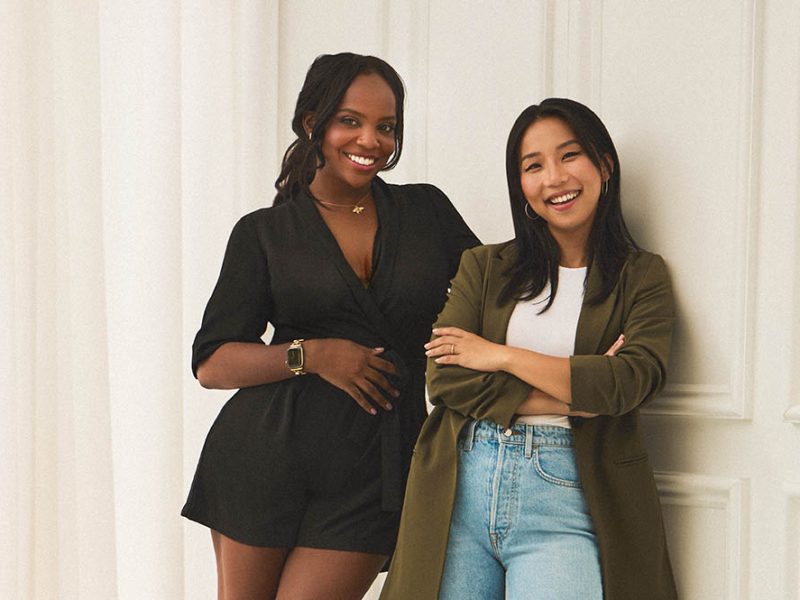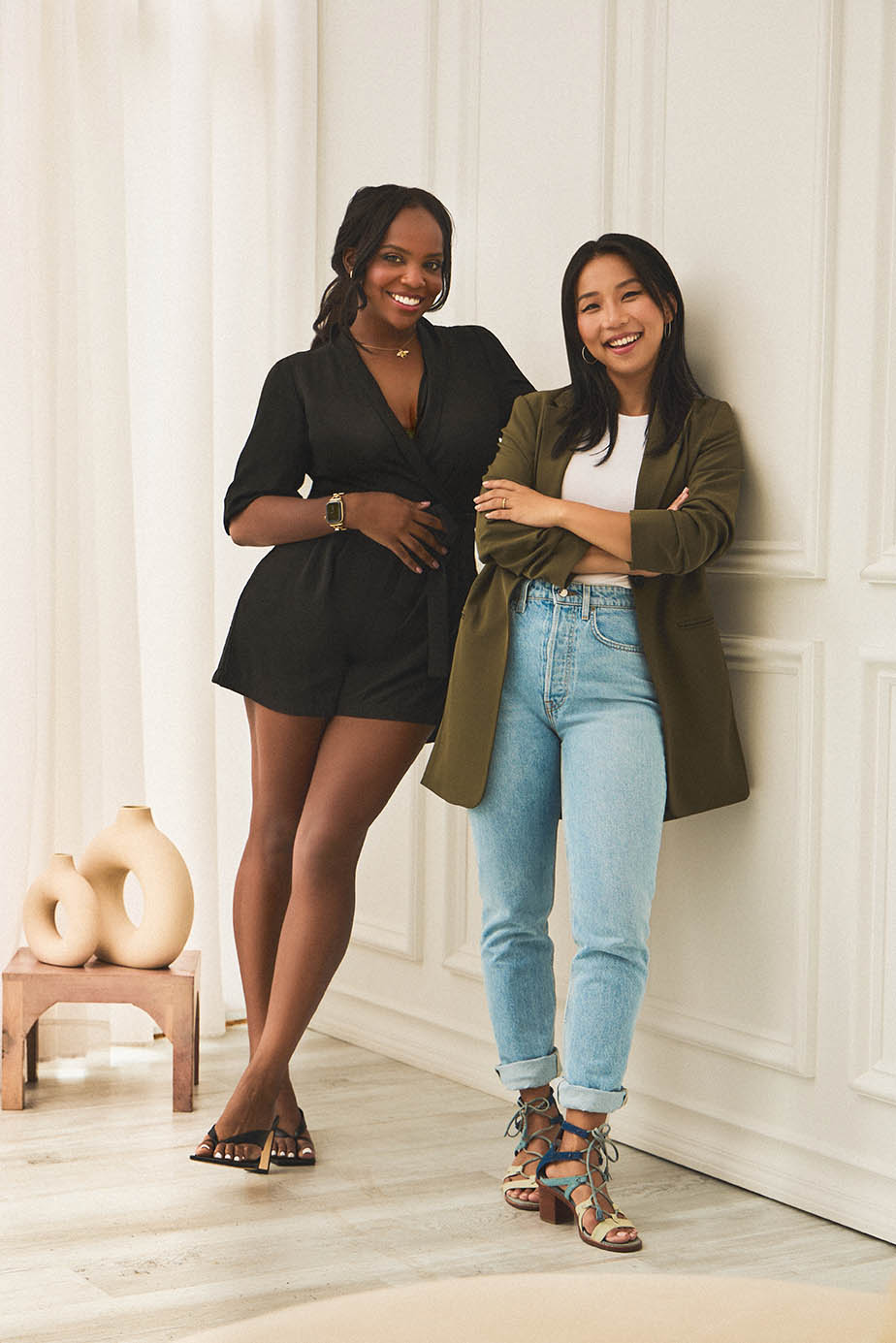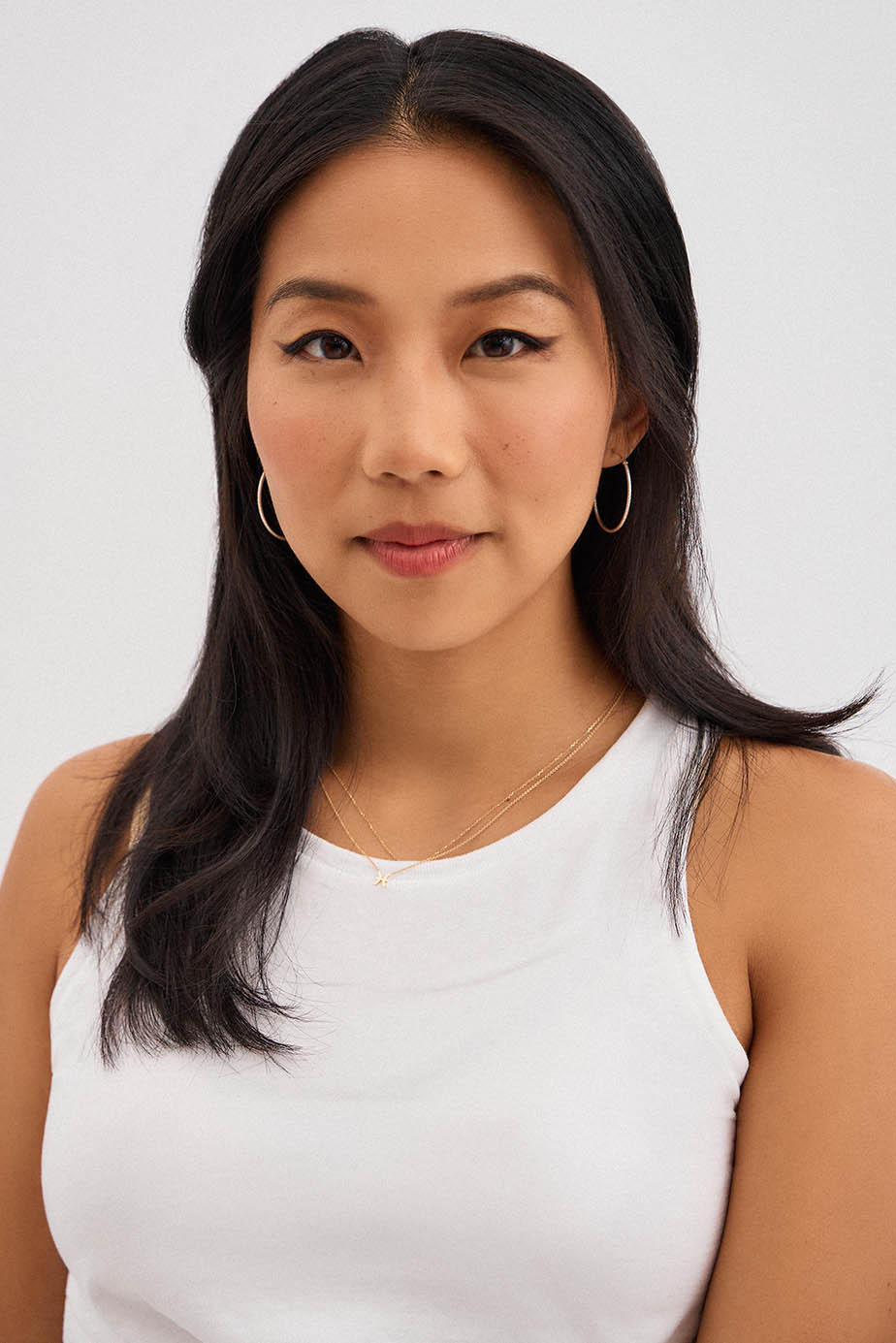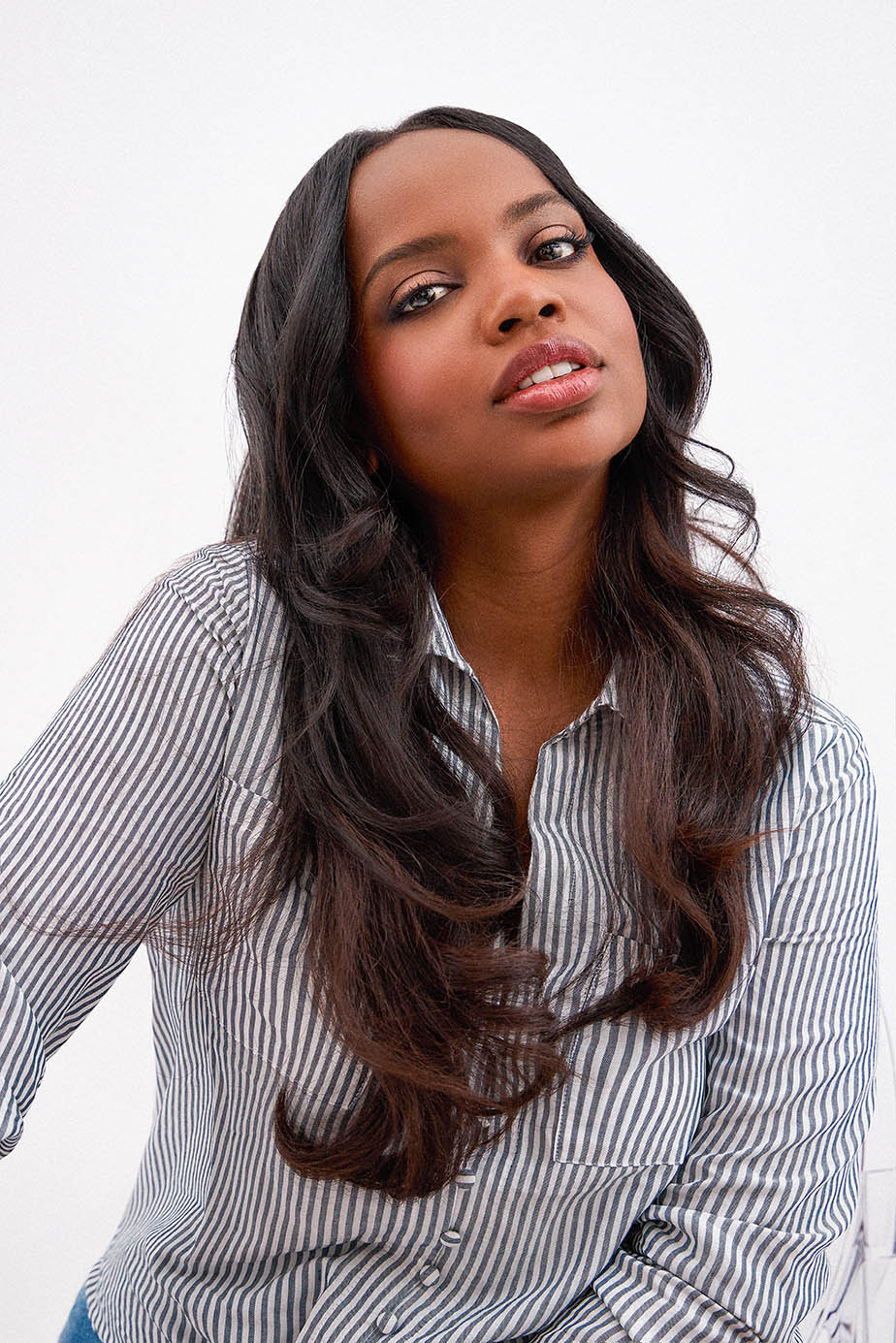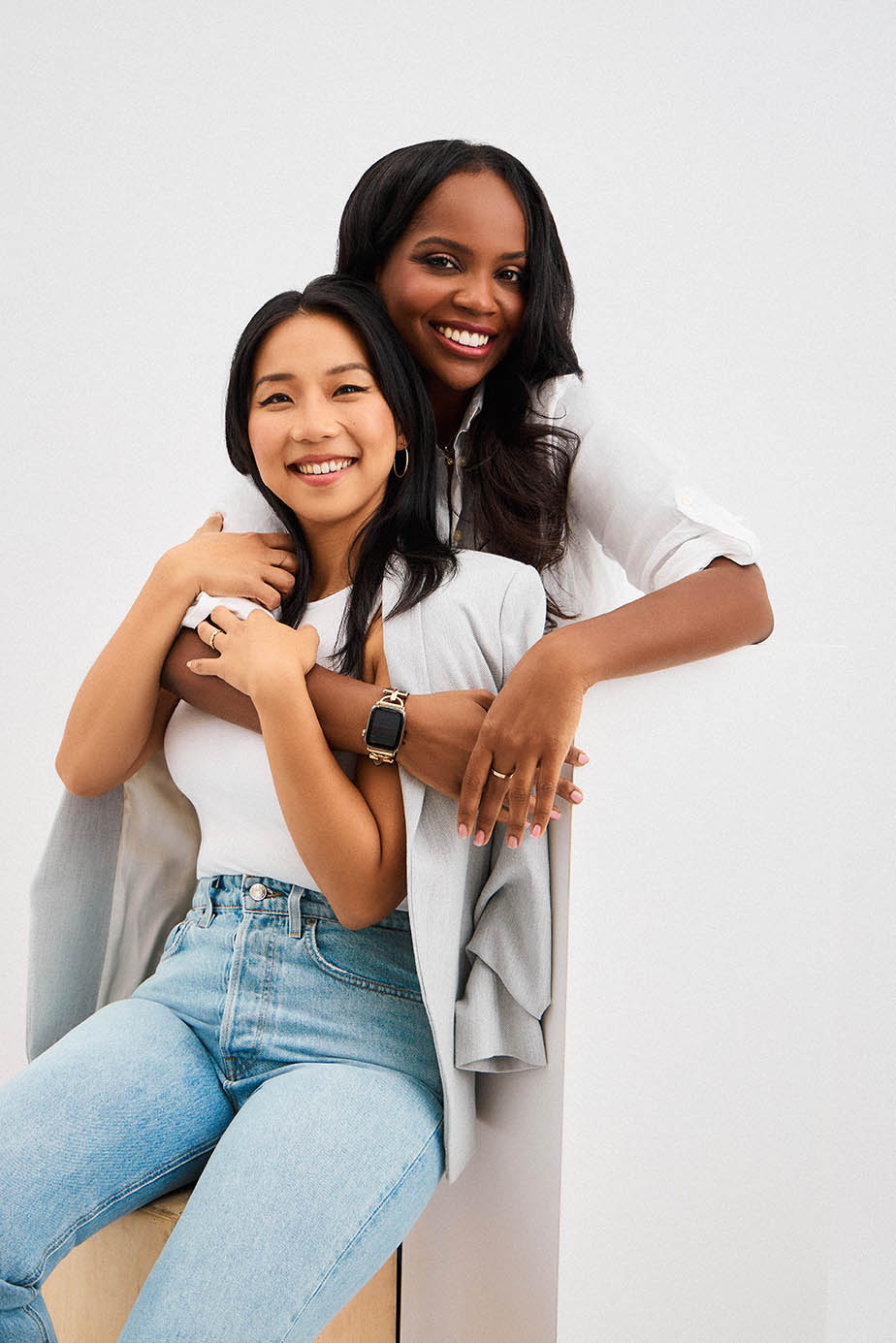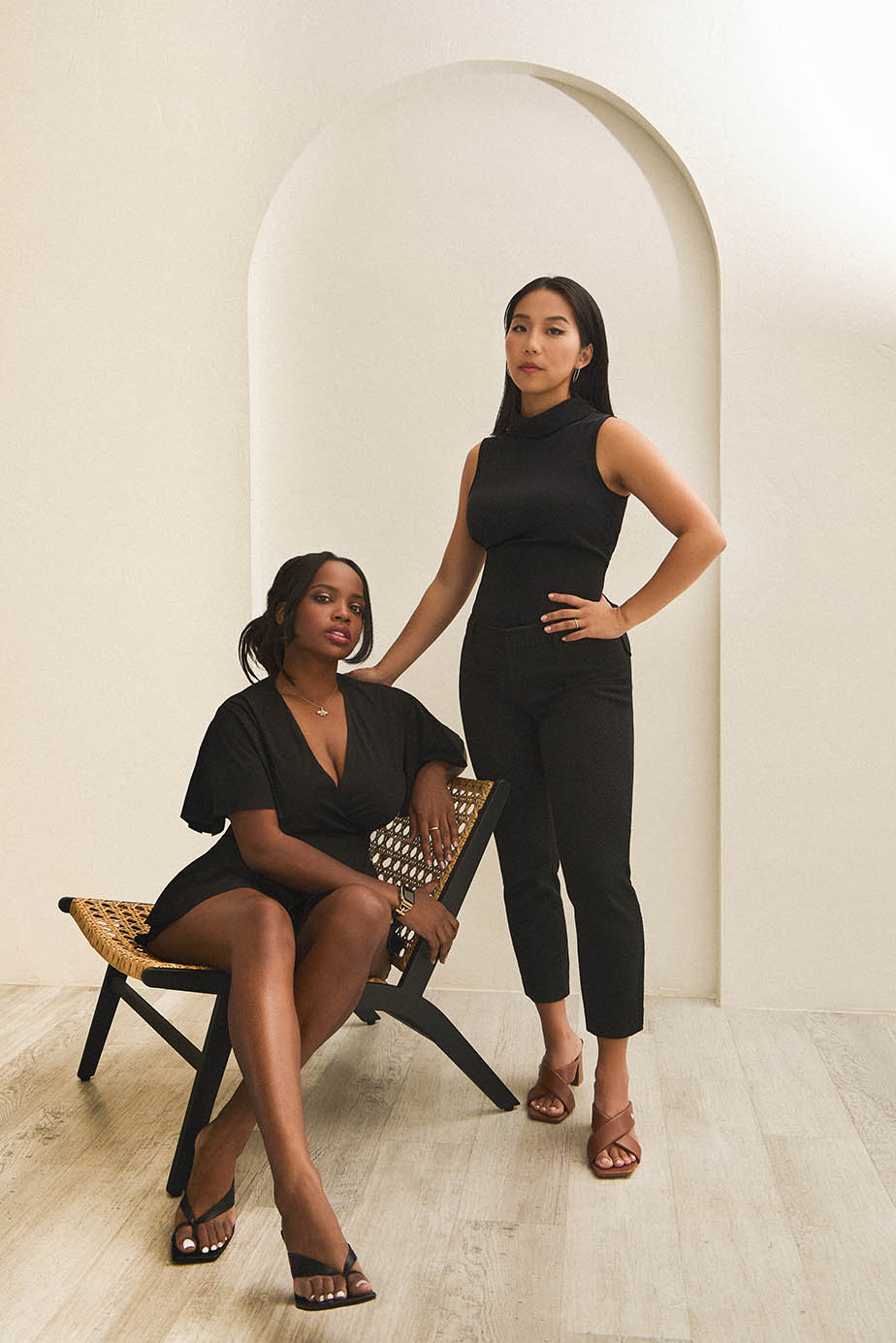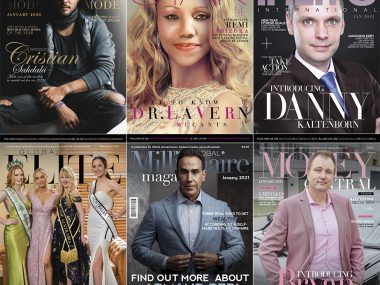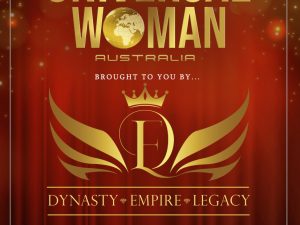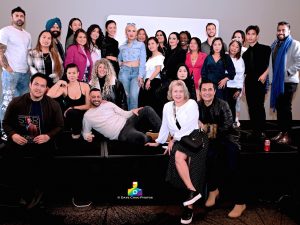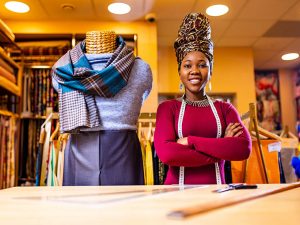Photos supplied by Lydia Bagarozza PR
In the dynamic world of technology, where diversity often takes a back seat, enter the trailblazing co-founders of Oak Theory, Hannah Ryu and Veronica Shelton. Renowned experts and women of color specializing in UX/UI, they are not just transforming the design landscape but are also committed to dismantling minority stereotypes within the tech sphere.
Hannah and Veronica, having navigated the tech landscape, shared that they personally experienced the glaring inequalities, gender biases, and stereotypes that persist within the tech industry. Often finding themselves as the “token” women of color, they felt compelled to conform to certain expectations in order to be heard in boardrooms. Recognizing the existence of an “invisible” glass ceiling, they founded Oak Theory, determined to break free from the industry’s status quo.
Oak Theory’s mission goes beyond merely challenging the norm; it is about creating a competitive design studio fueled by skill and grit, with a strong emphasis on their brand values. Specializing in UX/UI, web, and application design, Oak Theory seamlessly blends profound user-centricity with effective design principles to empower their clients’ business growth through authentic and impactful design.
Photos supplied by Lydia Bagarozza PR
Boasting an impressive client roster that includes names like Disney, HBO, Salesforce, Estée Lauder, Oprah, Unilever, Sephora, Subaru, and MAC Cosmetics, Oak Theory has ascended to working with industry giants such as Google and the University of California. Their journey is a testament to resilience, creativity, and a commitment to shattering industry norms.
In an exclusive interview with StarCentral Magazine, we caught up with Hannah Ryu and Veronica Shelton to gain insight into their extraordinary journey. Here’s an in-depth look at the driving force behind Oak Theory and the innovative minds reshaping the UX/UI landscape.
What inspired the creation of Oak Theory, and how does the mission to break minority stereotypes in the tech space shape the core values of your design studio?
We started our studio really out of discontent with what we saw in our industry. We didn’t see anyone who looked like us leading or at executive levels at companies like ours. We make up 0.1% of UX/UI design companies that are led by women of color (source: Clutch). We say this all the time – just existing in our space as who we are, leading our company, and building our brand – that is our mission in and of itself. – Hannah Ryu, Co-Founder, Director of Business Development & Operations
Considering the significant underrepresentation of women, especially women of color, in UX/UI leadership roles, how do you navigate and challenge the gender bias and stereotypes that persist in the tech industry?
By showing up. I believe that Hannah and I existing in this space is a mission all on its own, and so showing up (and showing up correctly) is a huge leap in taking on gender biases and stereotypes head-on. When we show up to meetings with clients and even with our team, we recognize that for most, it’s the first time they are seeing women of color in our positions. I don’t take any of it for granted; I understand the responsibilities that come with it. For many women, especially women of color, we understand that we don’t get as much room for error as our male counterparts. So there is a lot of pressure with always feeling the need to show up perfectly, whether it’s not showing too much emotion or always feeling two steps ahead in conversations, and that is something that, over time, I believe both Hannah and I have learned to navigate a bit more freely. That means being okay with making mistakes, giving ourselves permission to be vulnerable, letting our hair down, and diving into the work without feeling bad about it. – Veronica Shelton, Co-Founder, Director of Creative & Technology
Photos supplied by Lydia Bagarozza PR
Can you share some specific instances or challenges you faced as women of color in the tech space that fueled your determination to establish Oak Theory as a competitive and diverse design studio?
As a black woman in the tech space, I can say that there have been more challenges than I think I have space or time to write about. Whether it’s the constant need to prove ourselves to be allowed in spaces, we’ve already earned our right to be in or feeling unseen in products we are building and not having the safe space to speak out about it. These challenges are why we know we have to exist here. – Veronica Shelton, Co-Founder, Director of Creative & Technology
Given the statistics on the scarcity of women-led UX/UI studios, how do you see Oak Theory contributing to the transformation of the industry and influencing what appropriate diversity looks like within the tech space?
It’s multifaceted. We are not only leading a company as women of color but also in the influence of the projects we touch and the clients we are engaging with. It’s in the interactions like sitting across from C-suite folks who have never negotiated with people who look like us, and it’s in the simple but thoughtful design decision we make with the type of stock imagery we’ll choose to use to ensure more folks feel seen in the pages that they are navigating. Understand that we are just one studio but are here to take up space. We see our growth as a movement that is beyond our company or brand. We are creating more normalcy for other women and WOC in our industries and in business. – Hannah Ryu, Co-Founder, Director of Business Development & Operations
In creating Oak Theory, how have you worked to create an inclusive and empowering work culture that not only challenges the norms but sets a new standard for diversity and equality in the design industry?
We’re always learning. This is our first time starting a company; we’re constantly growing as leaders. We’re never going to be perfect or claim to know how to create the best inclusive and empowering environment. We try our best with what we know how to do and stay fair, direct, and focused on the work. What we do know is that many of the folks who come through our organization have told us that the environment is very different, especially for our POC teammates.
Just because of our backgrounds, it doesn’t automatically mean that we understand all diverse perspectives. We have teammates from all different cultural and language backgrounds. At the end of the day, we look to work with other talented and hard-working folks from wherever they are coming from. That is the best thing about running a remote-first company. We have had the opportunity to work with teammates from all around the world who have unique perspectives and approaches simply due to the fact that we all come from different life experiences. – Hannah Ryu, Co-Founder, Director of Business Development & Operations
Photos supplied by Lydia Bagarozza PR
Oak Theory emphasizes user centricity combined with effective design principles. Can you elaborate on how this approach sets your design studio apart and contributes to the success of your clients’ businesses?
I believe what sets us apart is that we REALLY dig deep into understanding who we’re designing for. Before we even think about the visuals, we’re all about getting to know the users through research, interviews, and workshops. It’s all about making stuff that is not only cool to look at but also super user-friendly and accessible. Our methods have been a game-changer for our clients, leading to better engagement and even helping them score some funding. I’ll also add that being a woman of color-owned studio, we prioritize bringing fresh eyes and diverse insights to the table; which sets us apart and makes a real difference for the businesses we work with. – Veronica Shelton, Co-Founder, Director of Creative & Technology
As co-founders, how do you see Oak Theory evolving and making an impact in the long term, both within your industry and in the broader context of promoting diversity and inclusivity?
To normalize it! To see women of color leading and building companies like ours and building big because, why not us!? I think again, given the statistics of how few of us are out here leading companies like ours, we’d like to think – what would it look like 10 to 20 years from now to see WOC-led companies in highly technical design spaces? We could all envision how that would shift the way many of us experience our world. We’d feel more included, more seen, and more truly, authentically designed. – Hannah Ryu, Co-Founder, Director of Business Development & Operations
What advice would you give to aspiring women and women of color looking to enter the tech industry or establish their own design studios, considering the unique challenges you’ve faced and overcome with Oak Theory?
Do it. Just give it a try! It’s challenging, but there are also a lot of opportunities out there. Folks are looking for fresh perspectives, and we need you to challenge the status quo. If you don’t see someone who looks like you doing what you want to do, maybe you’re the one we’re looking for to stir the pot. We’re here rooting for you. – Hannah Ryu, Co-Founder, Director of Business Development & Operations
Photos supplied by Lydia Bagarozza PR
